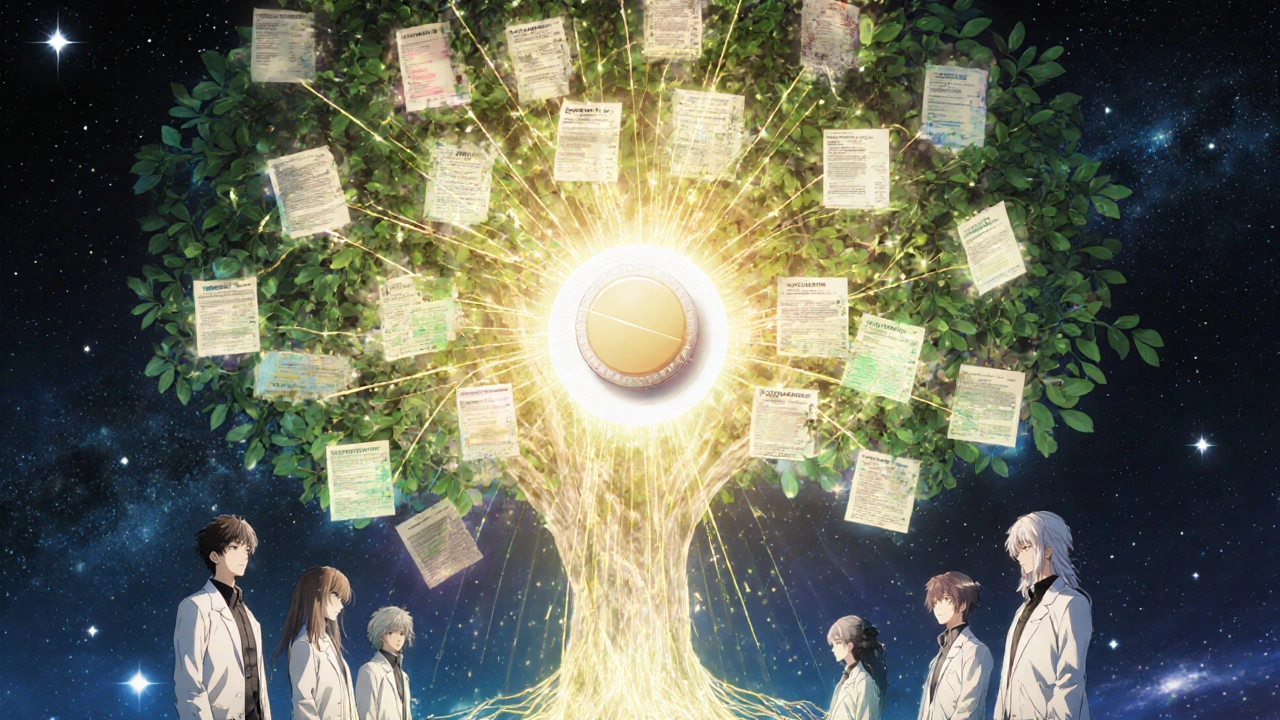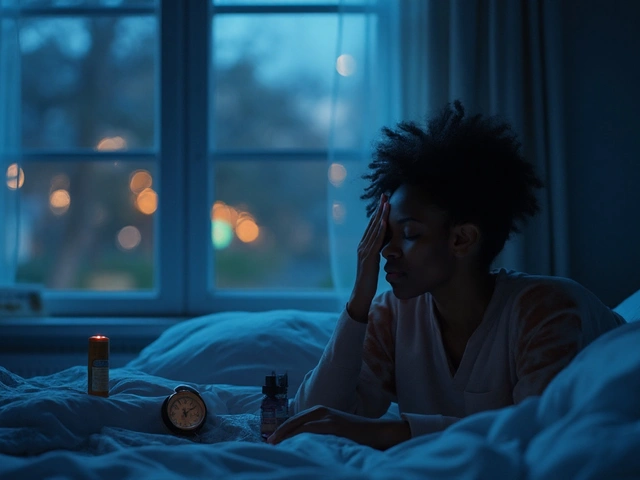Every day, millions of Americans take generic drugs. They’re cheaper, widely available, and just as effective as brand-name medicines. But how do we know they’re safe? The answer lies in a complex, rigorous system of oversight run by the U.S. Food and Drug Administration (FDA). It’s not enough for a generic drug to look the same or cost less. It must work the same way, in the same way, every single time. And the FDA doesn’t leave that to chance.
How Generic Drugs Get Approved Without Full Clinical Trials
Most people assume that to prove a drug is safe, you need to run full clinical trials on thousands of patients. That’s true for brand-name drugs. But for generics, the FDA uses a smarter shortcut called the Abbreviated New Drug Application (ANDA) process. Created by the Hatch-Waxman Act in 1984, this system lets generic manufacturers skip expensive, time-consuming trials because they don’t have to prove the drug works - they just have to prove it works exactly like the original.
That’s where bioequivalence comes in. A generic drug must deliver the same amount of active ingredient into the bloodstream at the same rate as the brand-name version. The FDA requires this range to be between 90% and 110%. That’s not a guess. It’s based on decades of scientific data and strict testing protocols. If a generic falls outside that range, it gets rejected. No exceptions.
And it’s not just about the active ingredient. The FDA checks the inactive ingredients too - things like fillers, dyes, and coatings. These don’t treat your condition, but they can affect how the drug breaks down in your body. If they’re wrong, the drug might not dissolve properly or could cause unexpected reactions.
The Three Pillars of Manufacturing Quality
Approval isn’t the end. It’s just the beginning. The real work happens in the factory. The FDA demands that every generic drug maker follows Current Good Manufacturing Practices, or cGMP. These aren’t suggestions. They’re legal requirements.
There are three non-negotiable systems every manufacturer must have in place:
- Raw material control - Every batch of active pharmaceutical ingredient (API) must be tracked from the moment it arrives. If a supplier changes without notice, or if the material is contaminated, the entire batch is thrown out. The FDA checks records, audits suppliers, and even tests samples independently.
- Process controls - Every step of production - mixing, heating, compressing, packaging - must be documented and monitored. If a machine runs too hot or a mixing tank isn’t cleaned properly, the system flags it before any pills are made. Written procedures aren’t optional. They’re mandatory.
- Lab testing - Finished pills are tested for strength, purity, and stability. The lab methods used must be validated - meaning they’ve been proven to give accurate, repeatable results. The FDA doesn’t just trust the company’s reports. They send inspectors to take their own samples and test them in independent labs.
These systems aren’t just paperwork. They’re built into the daily operations of every FDA-approved facility. And the FDA doesn’t wait for complaints to act. They show up unannounced.

Inspections: The Eyes on the Ground
In 2021, the FDA conducted over 1,000 inspections of generic drug manufacturing sites - more than half of them overseas. India and China supply most of the world’s generic drugs, and the FDA knows it can’t rely on local regulators alone. That’s why inspectors travel to factories in Hyderabad, Shanghai, and beyond.
Inspections are risk-based now. A facility with past violations, poor recordkeeping, or a history of contamination gets flagged for more frequent checks. In 2019, 15% of foreign facilities failed inspections. Domestic ones had an 8% failure rate. The gap isn’t small. It’s a warning.
The Generic Drug User Fee Amendments (GDUFA), first passed in 2012 and updated in 2022, gave the FDA the funding and authority to hire more inspectors, upgrade lab equipment, and speed up reviews. Before GDUFA, it took an average of 30 months to approve a generic drug. Now, 95% of applications are reviewed in under 10 months. That’s a massive improvement - but it didn’t happen by accident. It happened because Congress gave the FDA the tools to do the job right.
What Happens After the Drug Hits the Shelf?
Approval and inspections don’t stop when the drug leaves the factory. The FDA keeps watching - even after millions of pills are in medicine cabinets.
Doctors, pharmacists, and patients can report side effects through MedWatch, the FDA’s voluntary reporting system. In 2023, the agency received over 1.3 million reports. Analysts comb through them looking for patterns. If a particular generic version suddenly shows more reports of dizziness or liver problems than the brand-name version, the FDA investigates. They compare data from multiple sources - pharmacy sales, hospital records, lab tests - to see if it’s a real safety signal or just random noise.
If they find a problem, they don’t wait. They can order a recall, change the label to warn doctors, or send a letter to healthcare providers telling them to watch for specific symptoms. In 2021 alone, the FDA took action on over 30 generic drug safety issues.
The Office of Pharmaceutical Quality (OPQ) and the Office of Generic Drugs (OGD) work together constantly. They have a Clinical Safety and Surveillance Committee made up of doctors, chemists, and data scientists who meet weekly to review emerging risks. This isn’t bureaucracy. It’s real-time monitoring.

Why This System Works - And Where It Still Struggles
The system works because it’s built on science, not trust. Generic drugs are held to the same standard as brand-name ones. The FDA doesn’t treat them as second-tier. They’re treated as identical - because they must be.
And the results speak for themselves. Generic drugs make up 90% of prescriptions in the U.S. but only cost 23% of total drug spending. In 2022, they saved the healthcare system $313 billion. That’s not just a win for consumers. It’s a win for the entire system.
But challenges remain. Foreign facilities still have higher failure rates. Some manufacturers cut corners. Supply chains are long and complex. The FDA can’t inspect every factory every year - but they’re getting closer. GDUFA III, launched in 2022, aims to increase foreign inspections to 1,500 per year by 2025. That’s a 40% jump from 2021.
Another challenge? Complex drugs. Inhalers, injectables, and topical creams are harder to copy than a simple tablet. The FDA has launched the Complex Generic Drug Products Initiative to create specific guidelines for these harder-to-replicate products. They’re working with scientists to develop new testing methods - because old tools won’t work for new problems.
What You Can Do
You don’t need to be a scientist to help keep generic drugs safe. If you notice something unusual after taking a generic medication - a new rash, dizziness, or an unexpected reaction - report it. You can do it online at MedWatch.FDA.gov or by calling 1-800-FDA-1088. Your report might be the one that triggers a safety review.
Also, don’t assume all generics are the same. Sometimes, switching between different generic brands can cause minor differences in how you feel - not because one is unsafe, but because the inactive ingredients vary slightly. Talk to your pharmacist. Ask if your generic has changed. If you’re unsure, ask for the brand-name version. Your health matters more than the price tag.
The FDA doesn’t get everything right. But they’re not guessing. They’re measuring. They’re inspecting. They’re listening. And for the 90% of Americans who rely on generic drugs, that’s not just reassuring - it’s life-saving.







vanessa parapar
November 25, 2025 AT 11:29Okay but let’s be real-most people have no idea how much work goes into this. I used to think generics were just cheap knockoffs until I saw my cousin’s pharmacy switch brands and she started having migraines. Turns out, the fillers changed. FDA catches this stuff, but only because people report it. Don’t sleep on MedWatch.
Ben Wood
November 27, 2025 AT 01:35Let me be perfectly clear: the FDA’s oversight is not just rigorous-it is, in fact, the only reason we haven’t all been poisoned by counterfeit pharmaceuticals manufactured in unregulated facilities with no hygiene protocols whatsoever. And yet, the public still treats generics like they’re some kind of bargain-bin scam. Pathetic.
Sakthi s
November 28, 2025 AT 22:13Good system. Needs more transparency. But it works.
Rachel Nimmons
November 29, 2025 AT 07:31Unannounced inspections? Really? Then why do so many Indian factories keep getting flagged? I’ve read reports-some labs use the same vials for multiple drugs. They just wipe them off and call it clean. The FDA’s got a budget, sure, but how many inspectors can they really send to Hyderabad? This feels like a lie we tell ourselves so we don’t panic.
Abhi Yadav
November 29, 2025 AT 09:46Science is just a story we tell to feel safe. The pill you take? It’s a ritual. The FDA? A priest in a lab coat. We swallow the myth because we’re afraid of the void. What if the active ingredient is just sugar and hope? What if the real medicine is believing it works? 🤔
Julia Jakob
November 30, 2025 AT 21:13you know what’s wild? i took a generic version of my anxiety med and suddenly i felt like a robot with a headache for three days. my pharmacist said it’s ‘within tolerance’ but bro. tolerance doesn’t feel like your brain is on a dial tone. the fda says ‘90-110%’ like that’s magic. it’s not. it’s a range where people still feel like crap. why isn’t that a bigger deal?
Robert Altmannshofer
December 2, 2025 AT 13:08Look, I get why people are skeptical. I used to be one of them. But here’s the thing-the FDA doesn’t just rubber-stamp this stuff. They send inspectors with their own testing kits to factories that have never seen a U.S. cop before. They re-test pills from random batches, cross-check supplier logs, and sometimes show up at 5 a.m. just to catch someone cutting corners. And yeah, some places slip through. But the system’s designed to catch the big stuff before it hits your medicine cabinet. You wanna know what’s scary? The fact that this whole infrastructure exists at all, and most people never think about it. It’s like plumbing-you only notice it when it’s broken. So thank you, FDA, for being the quiet, overworked, underappreciated heroes keeping us from accidentally swallowing glue.